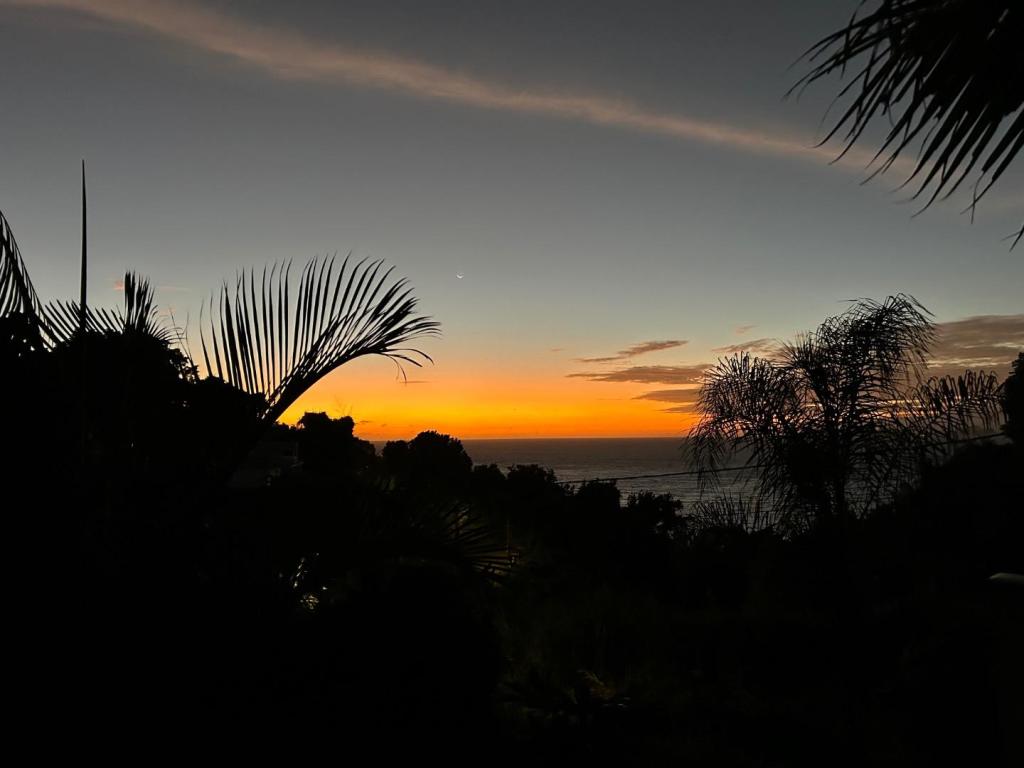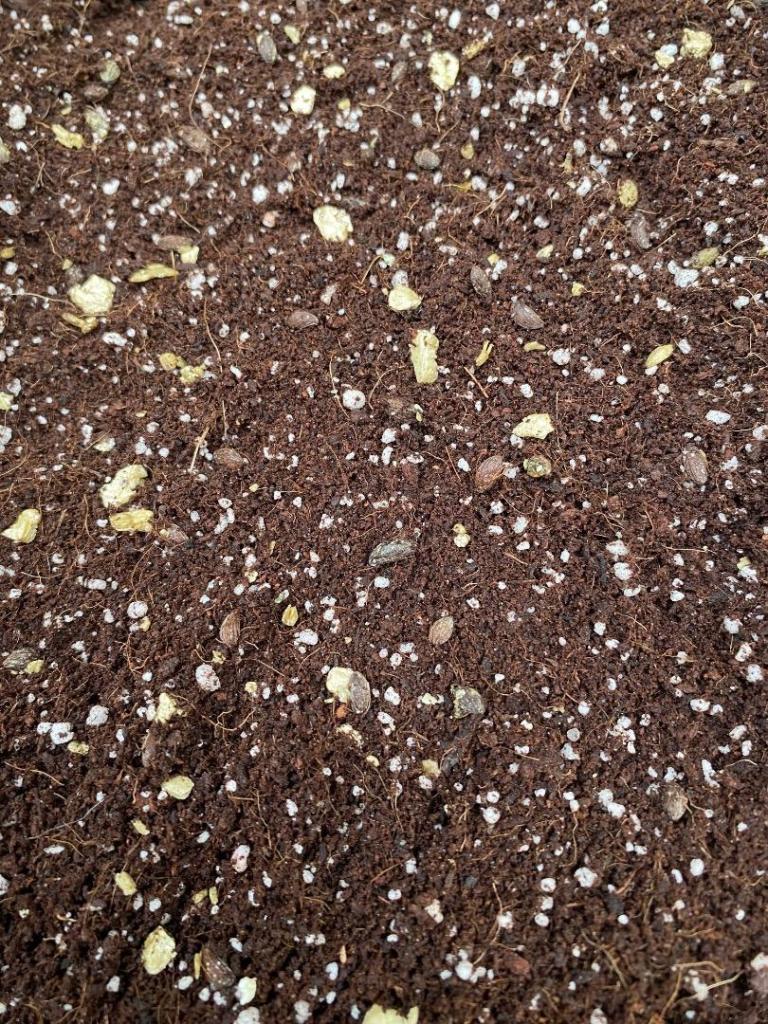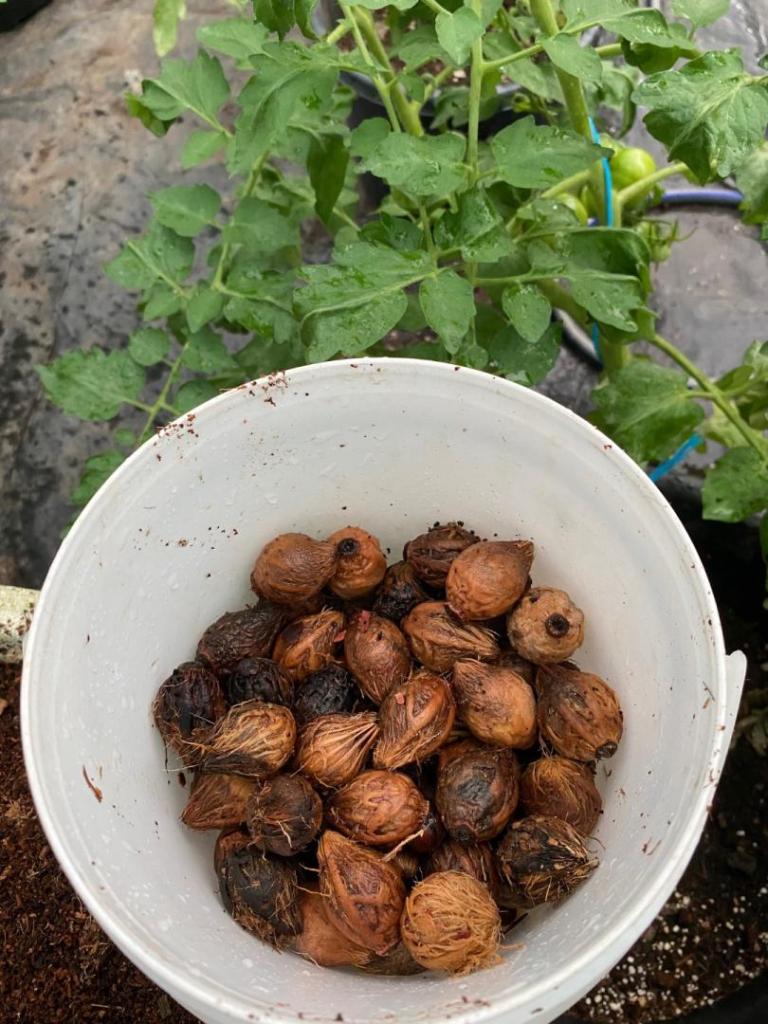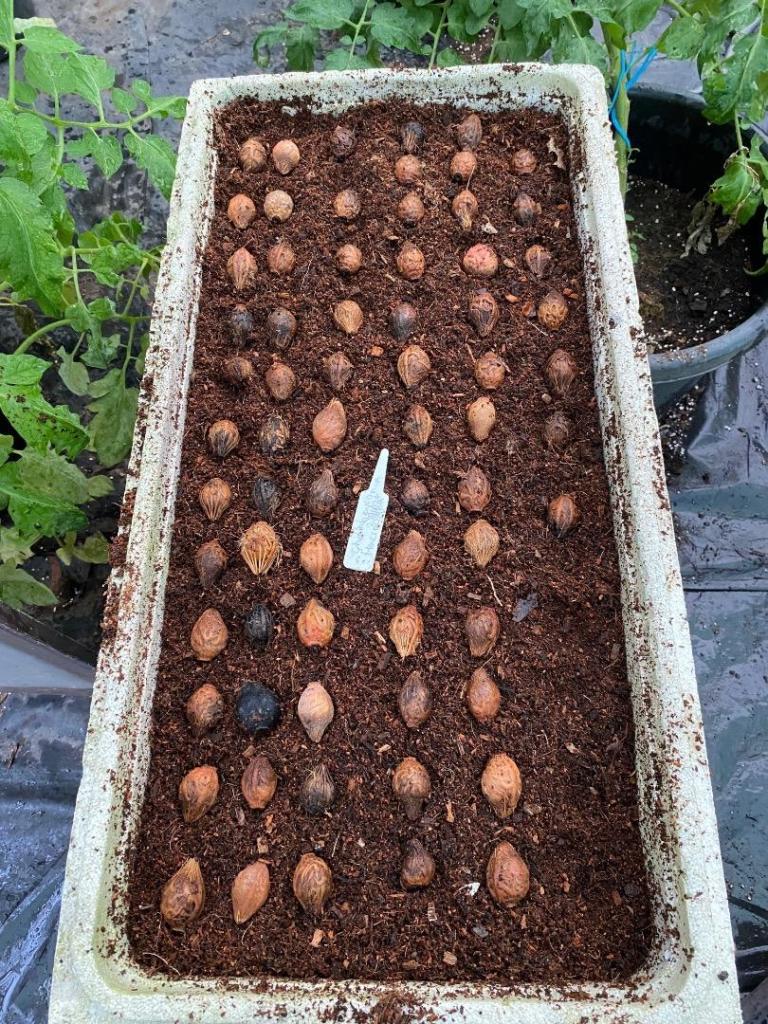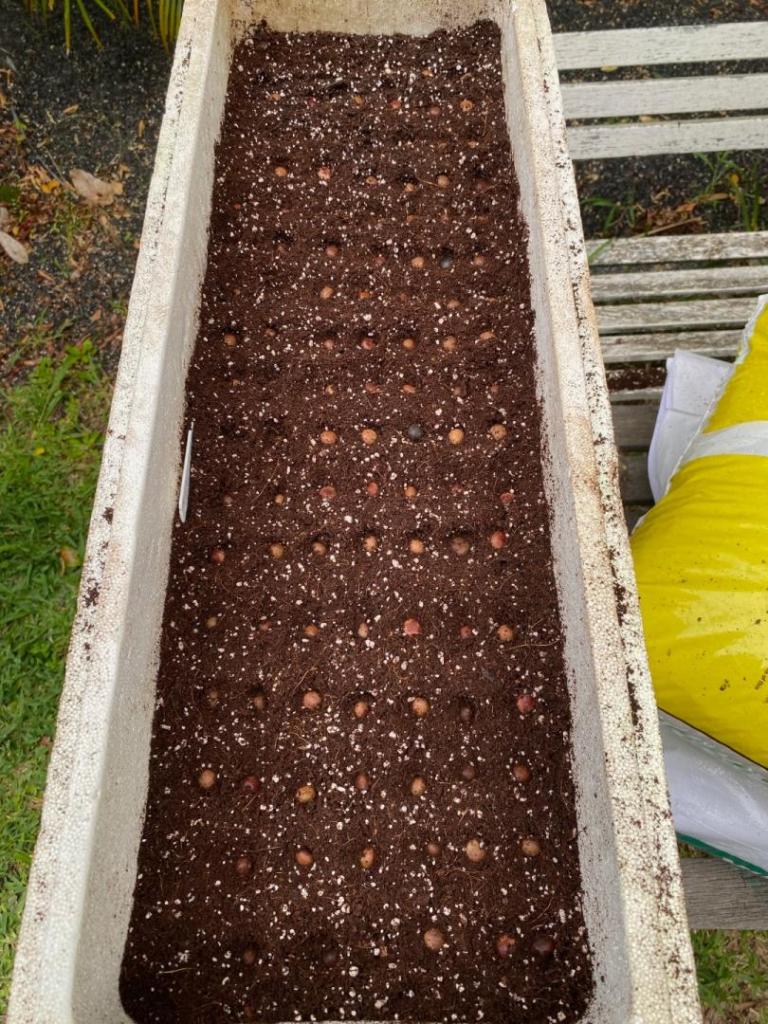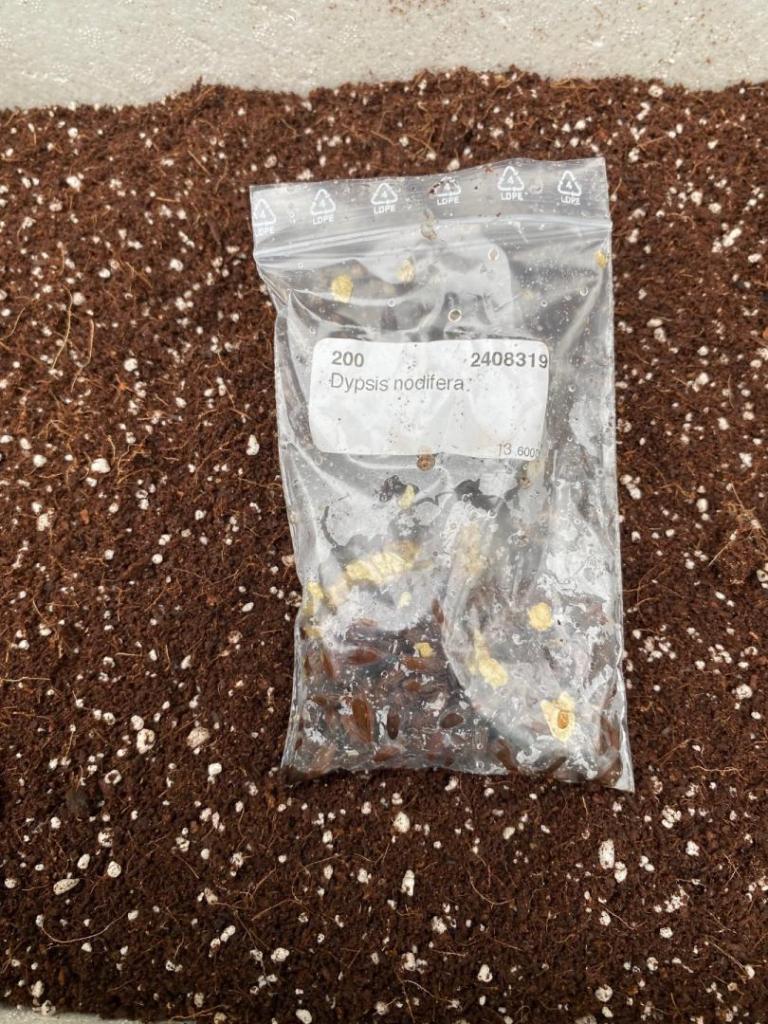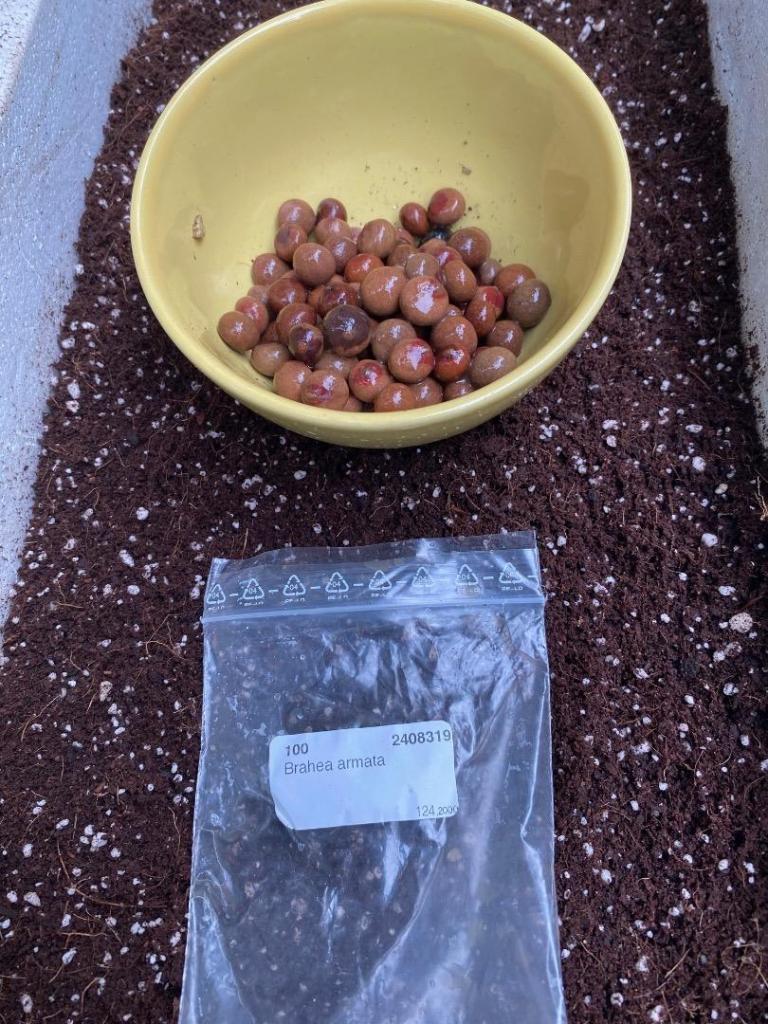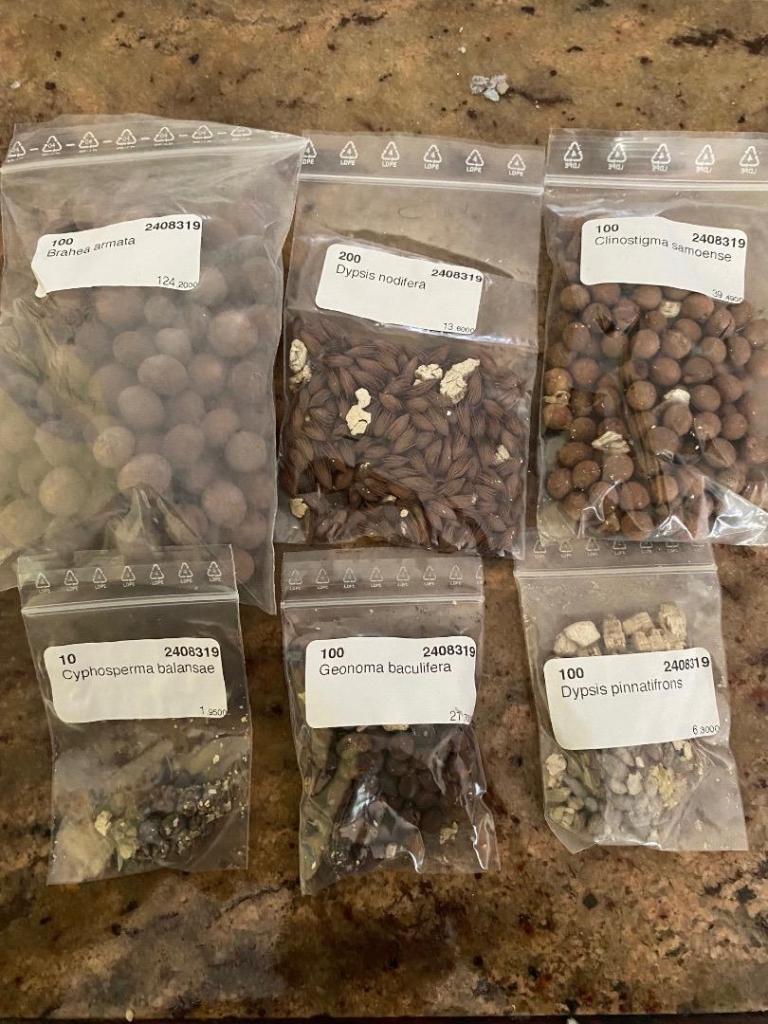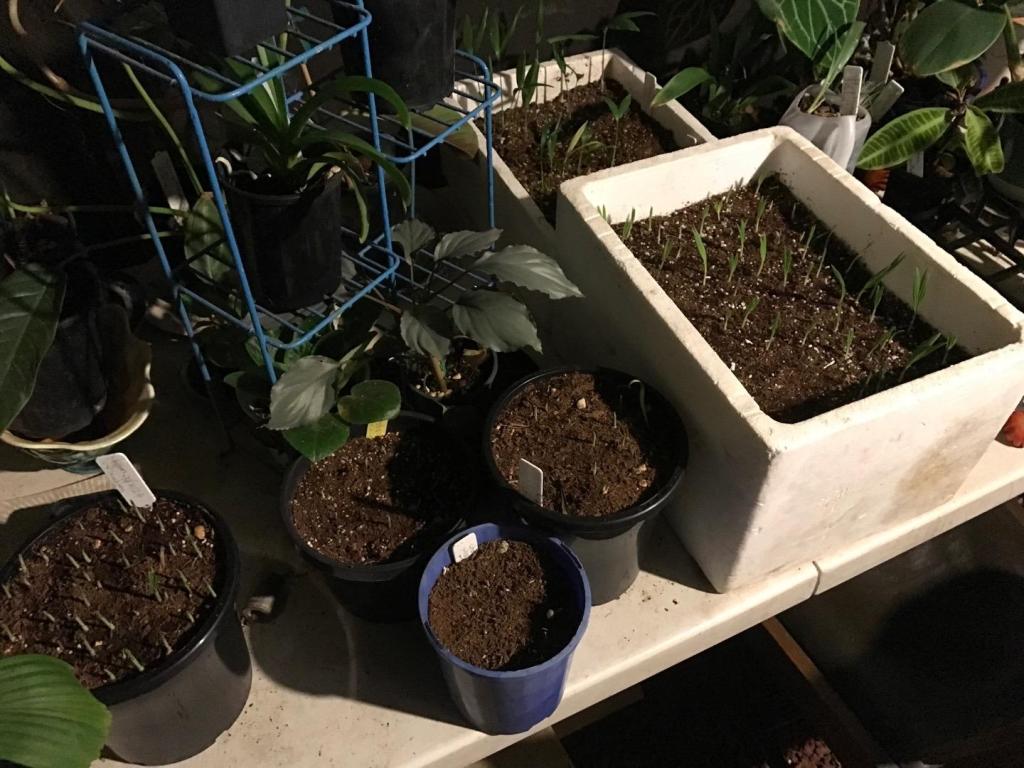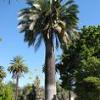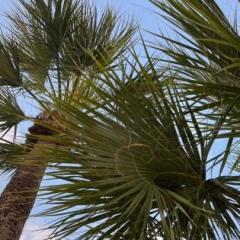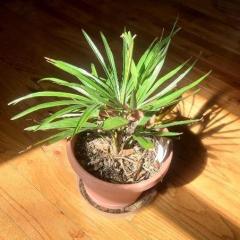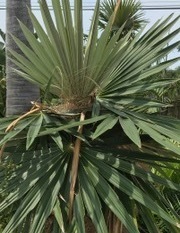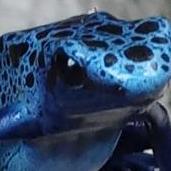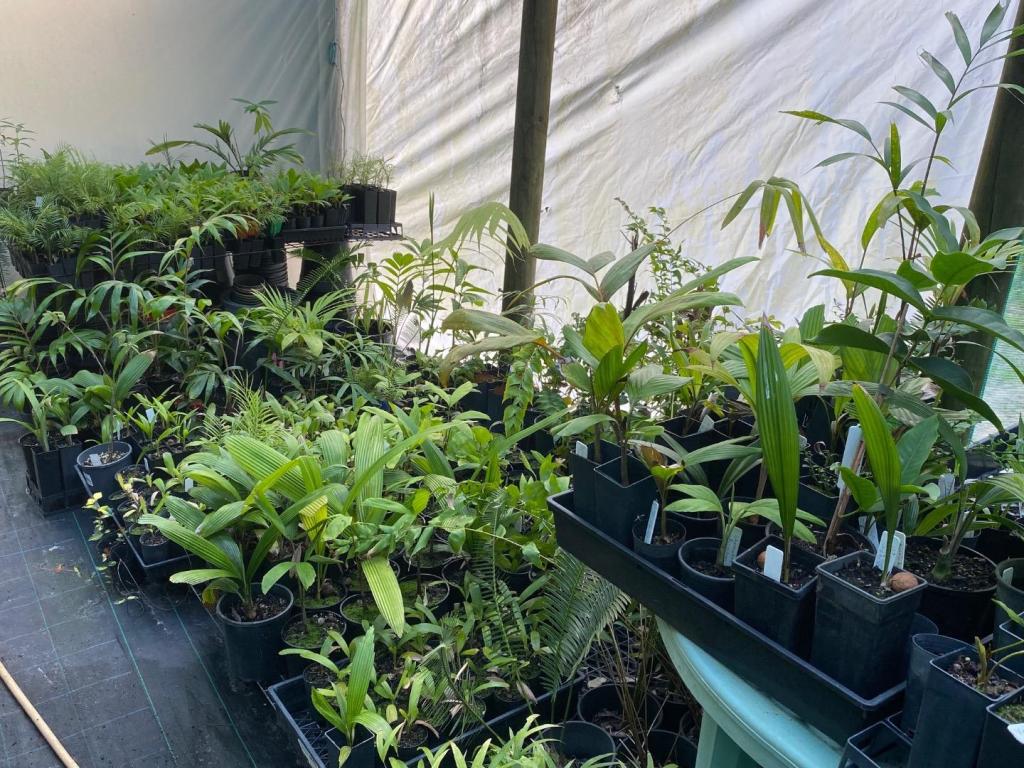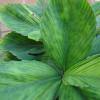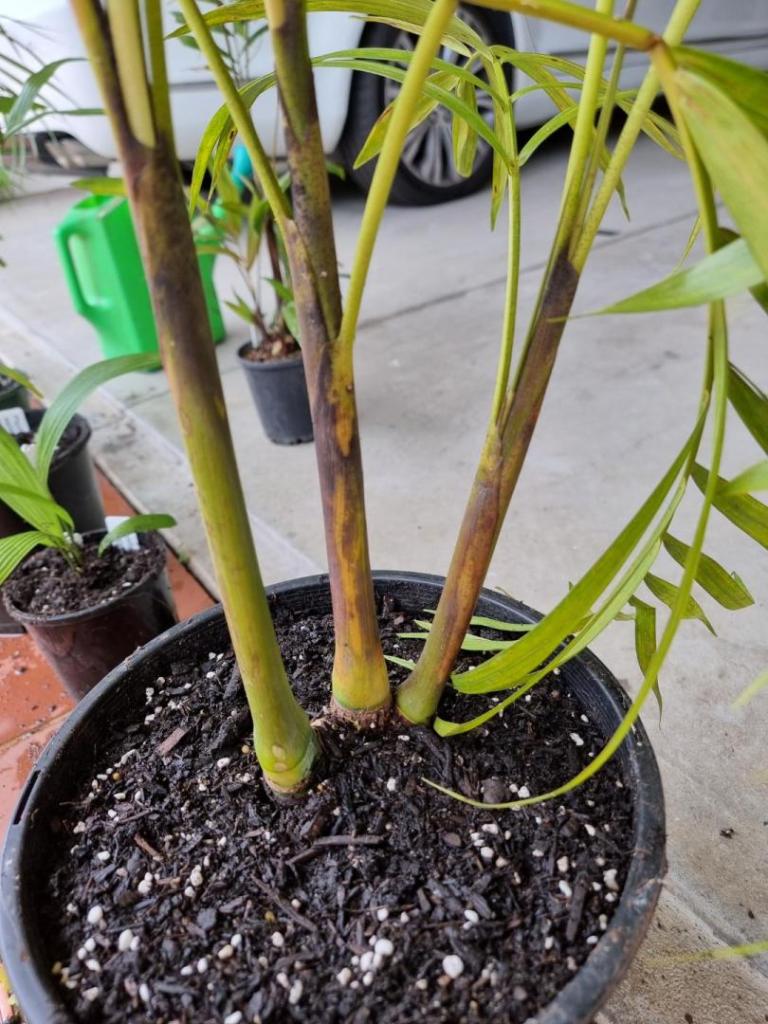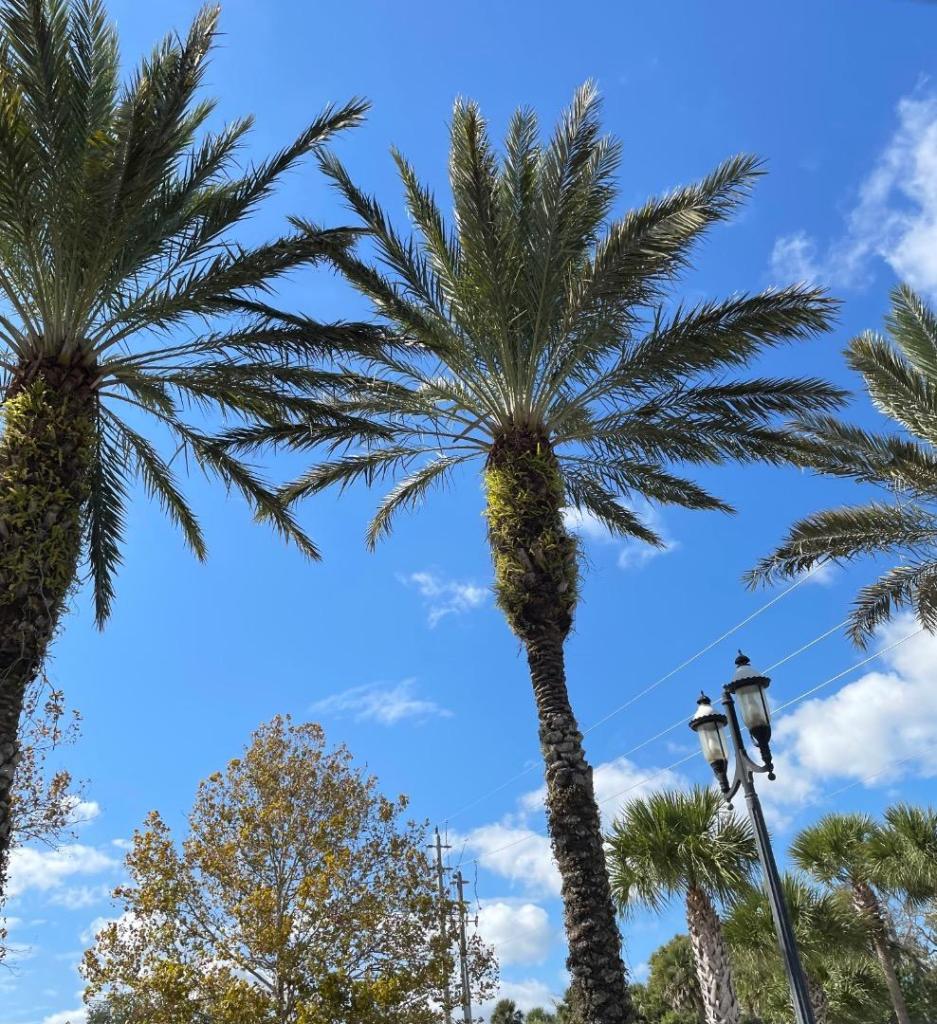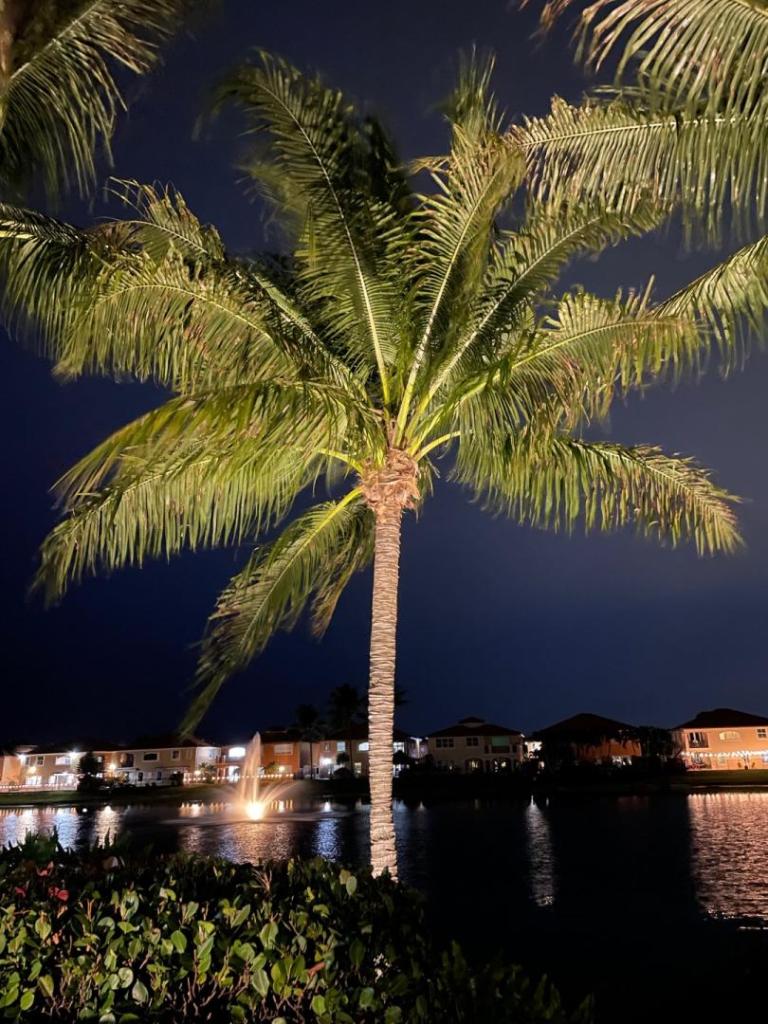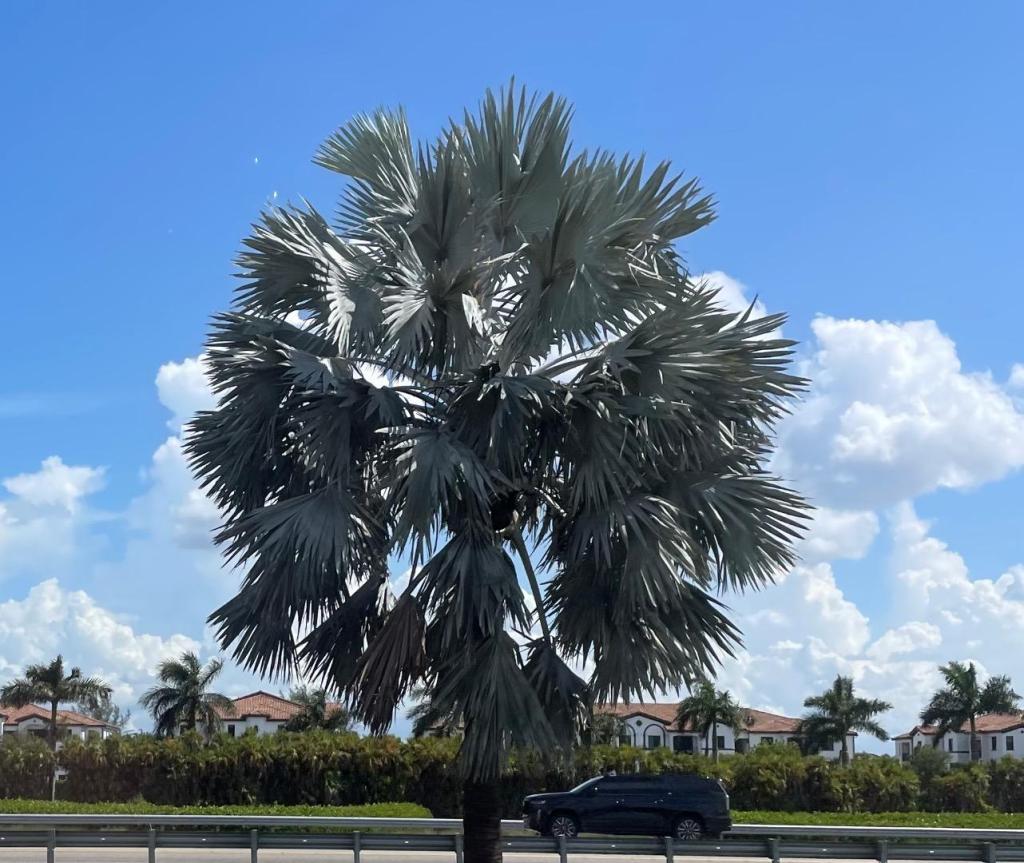Leaderboard
Popular Content
Showing content with the highest reputation on 11/29/2024 in all areas
-
8 points
-
5 points
-
4 points
-
As testimony to imported seeds germinating here’s a few that have been imported into Australia. There are eleven different varieties of seedlings there all of the palm seedlings are batches of 100 seeds except the joeys there from a batch of 2000. So I would say bye the looks of importing seeds does work. And yes when I look at the batches of seed# that didn’t germinate the odds are leaning towards a 70/30 hit and miss ratio with 30% being the miss ratio. It’s just my view on the subject of importing seeds. It is worth it in the end with consistency in orders made. Iam no rocket scientist just an observation but the mathematics add up pretty good if I where an accountant.4 points
-
My first palm was planted in 1990 . We bought a house with a pool and I wanted a tropical looking palm . I planted a Syagrus Romanzoffiana . When I drive by the house , I can still see the palm(s) I planted at that house that were too huge to move when I left in 1997. Harry an old , crappy photo from the archives. One of my first Queens and a pot of Howea F.4 points
-
4 points
-
4 points
-
Those who receive our emails were notified of multiple updates to our website. These were shared last evening: The tagline under the title has been changed to Preservation, Education, and Commitment. The itinerary for the 2024 Holiday meeting is now on the Home page. https://cfpacs.com/org/ The About Us section has a new look more consistent with what used to be published in The Palmateer. https://cfpacs.com/org/about-us/ The previous Palmateer section has been set to open without a password and contains links to a plethora of web resources and our previous publications. https://cfpacs.com/org/palmateer/ The What's New and Membership Info sections have received minor updates. If anyone is still interested in serving as Editor for our newsletter, please let us know by responding to this email. https://cfpacs.com/org/whats-new/ https://cfpacs.com/org/membership-info/ There is one additional update for those who haven't visited the site yet. We have a new Events section that has information about plant sales, educational events, and our tentative itinerary for next year's meetings. Please keep in mind these are subject to change as the year progresses. We appreciate the help of @D. Morrowii, @ChristianStAug, and @Fishinsteeg234 with scheduling a slate of meetings that are sure to be eye-catching. https://cfpacs.com/org/events/ The site will continue to be updated more regularly now that we have the appropriate access and expertise in place.3 points
-
I paid an extravagant sum of money for a small start of this plant in 2021, but now I am gratified that I did purchase it. Here is the first flowering. It took a long time to really get established with active growth. It grows over a huge Platycerium bifurcatum in the crotch of a Metrosideros excelsa. My only complaint is that it wants to just sprawl outwards, and less to grow vertically up the tree branch structure.3 points
-
3 points
-
I managed to grow a P. canariensis for 10 years from a 5 gal to about 8' tall. It wouldn't have ever survived without a winter tent. It benefited from the overhead protection on cold nights with a string of old C9 lights on the ground around the base of the trunk. When it out grew the shelter and was left to subsist on it's own, it easily died. I believe this was the last year (2014) it was alive.3 points
-
Yes it is a Catholic Church. I don’t know the significance of that but there are a fair few around Fremantle and quite a few CIDP as well but these seem some of the oldest. Just at a guess more than a century old. Could have been germinated in the early 1900s at a guess. Fremantle took off with buildings and wealth in the late 1800s with the gold rush. It basically was the gateway to the goldfields back then. I love the vibe of Fremantle having kept a lot of its old heritage alive. It also was the host of the infamous convict prison that changed little until it was closed in 1991. This place has a strong convict heritage.3 points
-
**** Fair warning ..For those a bit squeem-ish when it comes to gross things, you might want to look away.. **** A few years back, i'd mentioned something ..somewhere.. regarding an insect " pest " that legitimately qualifies as a threat.. Not necessarily to plants, but to ..anything else, inc. humans.. While flies themselves are pretty gross creatures, the New World Screw worm, Cochliomyia homnivorax ups the " Gross " factor ..just a bit.. The Latin name literally translates to " Man Eater " ..and yes, this Bug- eyed, Obligate Parasite can kill a man ( ..or woman ) and was once one of the greatest threats to livestock in the US " back in the day " ...up until it was eradicated from the US in the early 80s. That campaign continued thru the 90s / earlier 2Ks until this insect was beaten back to -roughly- the Darien Gap in Panama. Beyond that, in South America, and some islands in the Caribbean where it hangs on, the efforts to fully take out this insect has been challenging due to terrain, costs, and / or political will. It was gone here in the states until it quietly reappeared in the FL. Keys sometime in 2016 where the outbreak seen there killed numerous Key Deer, and was detected in a stray Dog in Homestead just north of the designated quarantine zone there before the control measures used to knock down this insect worked as planned. Fast forward to last summer, and while doing my yearly " check in " on efforts to control / any new, general research on this insect, there were reports coming out of both Panama and Costa Rica of new outbreaks being seen in some areas of both countries. Tack on another year and it appears the threat posed by this insect is quickly spreading across all of Central America, with a detection noted in Chiapas in the last couple weeks.. This is occurring despite re-invigorated and stepped up efforts to get the more severe outbreaks in Panama and Costa Rica under control again.. When i'd read the last reports of it being detected in Guatemala, i had a feeling it wouldn't be long until it reached southern Mexico.. That has happened.. Question now is ..how far north will it progress? ..and can the control efforts currently underway stop the advance - before- outbreaks are detected much closer to the US? Before full eradication, when it roamed the US, outbreaks were seen as far west as central California, As far north as the Central Plains and Southeastern states, north of FL. It was also sporadically detected in the upper Midwest during years when conditions were ideal. Another question regarding this current resurgence involves whether or not the female flies of this species have gained some sort of new ability to " sus out " the sterilized males released and now avoid them.. That would destroy the current means of effective control of course. Maybe a vaguely rumoured strain of the species that was rumoured to possess some resistance to radiation, that is spreading into new areas is responsible?? ..Time will tell... Regardless, putting this out there as a " Keep your eyes -and ears- on this situation over the coming months " kind of advise, rather than a " The sky is about to fall " alarm. Understand the difference.. Highly doubt this fly will return to the US -in any great numbers at least- but, We'll have to see since -so far- the extra aggressive response to this current situation isn't seeming to have much effect.. That said, ..as was the case in the past when the battle began, full, regional control can take up to several years.. In that time, reports of sporadic, localized outbreaks aren't completely out of the question further north in Mexico, and / or possibly in FL. again, and perhaps the border regions of Texas / other states, depending on what weather events occur.. It is thought that the outbreak seen in FL. was a result of flies being blown north from Cuba by a Hurricane. Should such occur, it wouldn't be out of the question that the occasional sterilized fly turns up in someone's yard. Won't post it here but there is a really good observation on iNaturaliust that details the trademark markings of adult NWS flies, ...as compared to the ..roughly, 4 or 5 other species of similar looking fly species that are common in the US, None of which cause the same issues as NWS. One significant step has apparently been made in that the US has now suspended all imports of Cattle from Mexico. I don't doubt restrictions on the importation / movement of other livestock may occur if outbreaks expand north beyond far southern Mexico over the coming months. Something to monitor casually, but closely.. Related articles... Will add more when / if need be.. *** As stated at the top, .If gross things make ya' squirm, turn away *** Scientists built a great wall to keep out the ‘man devourer’ – but now it’s fighting back https://www.cdc.gov/coca/hcp/trainings/resurgence-new-world-screwworm.html https://u.osu.edu/beef/2024/11/27/cattle-imports-from-mexico-restricted-after-new-world-screwworm-detection/ https://publications.aap.org/aapnews/news/30599/Twice-eradicated-parasite-threatens-northward?autologincheck=redirected2 points
-
I'm on the flip side of this equation. I consider myself hardcore religious and think much of The Science believes it can explain far more than it can. Yet, after these past brutal years, I find myself checking Farmer's Almanac, believing the reasons for the wrath of God's weather patterns far outweigh the importance of my prayers to spare my ornamental garden. I cope through ignorance and hubris and plant stuff like Adonidia because how boring would it be if I didn't? 🤣2 points
-
I am no where near your quantities, but almost all my palm come from imported seeds, since not much available here. Definitely worth it, and good success too. The only genus with which I’ve had many faillures was Copernicia. They germinate and then rot. Here is my shade house Now the question is, where am I going to plant 3 corypha utan 😅2 points
-
It was a failed experiment from the get-go in NYC which is zone 7b. CIDP will struggle badly in 8b even, unless it is a dry, arid and very sunny 8b climate like you can get in parts of Arizona, New Mexico, Texas etc. You really need zone 9a and even then you might be protecting them in continental areas that can still get 8a winters once or twice a decade. So zone 9a is really the bare minimum for CIDP (I can barely grow them here in 8b), but ideally you need 9b for decent long term CIDP’s. Portland, Oregon is 9a and they still can’t grow CIDP’s for instance. So trying in 7b New York was suicide with how wet it is and how cold it gets in winter. Another big factor is the wet, humid summers in NYC off the back of having a cold winter. That is a recipe for fungal issues and crown rot. They really need a dry summer from May - September, especially if they are recovering from winter damage. That is why the do so well over here in the UK, because the summers are generally dry with low humidity. Mild, wet winters followed by warmish, dry summers are ideal if you are trying to grow in 9a. Again, I struggle to grow them in my 8b location with mild winters and dryish summers. You need 9a / 9b and that is that. Unless you’re in Arizona, New Mexico, Texas, Florida etc where you can get them through 8a / 8b.2 points
-
I’d guess Attalea of some kind. One of the truly giant ones (cohune, butyracea?).2 points
-
Time to sow a few seeds with the warm weather approaching now sow the time. Taking advantage of the air temperatures to help with germinating some seeds. Bottom heating will be used for of the more rarer varieties and some I will put in the hothouse the easy germinating ones like the Johannesteijsmannia the Caryota obtusa and the chambeyronia macrocarpa seeds will do fine in the hothouse the rest of the imported ones from rps. All are in styrofoam box’s with lids, coco coir perlite mix fine grade just ever so lightly moist. The seeds where lightly pushed into the mix then lightly covered 0.5mm for the bigger seeds and for the smaller seeds they where covered 0.2mm or near enough for both coverings of the seeds. Time will tell how successful it is this little science project is that’s slowly turning into a mad scientist laboratory.2 points
-
@Alexberm those palms are gorgeous whatever they are! Thanks for sharing.2 points
-
Looks typical of Chambeyronia oliviformis at that size to me, but I couldn’t exclude other species which can look similar at this age.2 points
-
2 points
-
Shade does weird things to petiole length. There are some mexicanas in full shade at Santa Ana wildlife refuge that probably have 20ft+ petioles, and the leaf rests on an oak branch etc2 points
-
2 points
-
The very first palm I probably ever planted was a trachycarpus fortunei I brought from North Carolina when I lived in zone 6b Pennsylvania. Now after living in the South, I have completely lost track lol. I grew this palm for a few years with protection. It was removed from the property after I left Pennsylvania thought. : (2 points
-
Ok, it's been a while since my last update ( I finally have some free time to get back to this due to Turkey Day ). I see That Palm Talk forum members are recently posting about the cold hardiness of Canary Island Date Palms, so let me continue to add to my personal observations on the topic. Unfortunately, I am afraid that I will have to start on a bad note, as I feared what would happen came to past... May 2024: Even though it looked pretty weak, my little CIDP seemed like it doing great after taking off the winter protection in April. But then near the of the month there was rain storm , followed by a brief cold blast, which finally did it in. I knew that frequent defoliations due to cold weather temperatures make even full grown CIDP go into decline, so I was always expecting this outcome with this small planting... I had done the annual spear pull test - with the expected result this time. I gather that the box kept the soil dry enough to keep the shallow roots insulated for a time, but when the cold rain penetrated the soil once the planting was uncovered, it sent it into shock that it would not be able to recover, being in such a weak state as it was already. Maybe I should have waited until may to remove the winter protection for this , until the weather stabilized into the spring temperatures. I checked the stem shaft for any signs of life. Looks like there was nothing down there but rot and death.... Dug up the remains, and it appears that the root system never became extensive, which is definitely the mark of a not healthy palm. Oh well.....Looks like the end of an interesting experiment. Or the beginning of another? Fortunately, I still had two six year old San Francisco-sourced seed grown CIDP, one planted as replacement for the recently departed. June: July: August: September: October: November: As one can see from the above pictures from the previous months, this older replacement CIDP is doing pretty well , and if the results of the winter protection of the sister CIDP in my other 'Site B' location ( those pictures will also follow soon ). Will set up the winter protection for this new one sometime this weekend.2 points
-
Don't be afraid to explore other plants, too including palms. The cool thing is that the really colorful palms seem to like higher humidity (anyone who disagrees is welcome to correct me so I can add to my semi-inland garden!) which is right near the ocean.2 points
-
I should have about 25 more when all are ready, so everyone can get a few. Unfortunately, the seeds ripen slowly, possibly taking almost two yrs, and then they don’t ripen at the same time. A few come down every 2-4 weeks. So seedlings are at all different stages. Checked my baggies this morning, a couple more sprouts!2 points
-
Thanks I can get powder form of bacillus. It’s targeted at caterpillars in the horticulture industry as an organic control, iam assuming it would do the same as the pellets . But definitely worth a try. I usually empty any stagnet water I find in containers it’s just the area I live in go for a walk in the bush around and the mosquitoes attack you. Once again thanks for the information.2 points
-
2 points
-
2 points
-
I did things a little differently this time for this winter season protection method . The items l be C9 Christmas lights ( This time taking @Allen and @Will Simpson previous suggestions and advice on using active heating elements ) , Wilt Pruf Anti-Transpirant spray, thermal cube, and a little wooden support structure for the Christmas lights inside of the insulation cube (Not to mention garden extension cord connecting to a somewhat nearby patio electrical outlet ). ( Looking back on this , I probably should have also put in a thermal temperature reader as well.... ) The C9 lights should be activated by the thermal cube when outside temperatures fall to 35 degrees Fahrenheit ( and turn off automatically at 45 Degrees F ). Hopefully this will give some added heat to the palm during the long winter months. I placed some new mulch on the base to prevent frost , and this time also added little removable tarp for extra protection for when it becomes very cold out. There should be enough airflow to prevent build up of humidity in the insulation box, along with any possible fungal growth on the leaves Let's see how this goes , hopefully for the best....See you again next spring, little palm!2 points
-
Ok, I know, It's been a while since I've given an update here on the status of my little Canary Island Date Palm. I've been super busy at work these past few months, but now I can finally get back to this during my free time this Christmas Holiday weekend. As you can see in the below pictures, it has managed to recover pretty well over the spring , summer and fall season: July: August: September: October: November: November is the month when the temperature begins to get cold here in New York City, so that is the time for setting up for the winter protection. I'm quite happy that the palm has managed to bounce back from last winter somewhat healthy ( with the help of lots of water and palm fertilizer ) I'm not taking any more chances just using passive insulation and will now look to use more active heating elements for this wintertime....2 points
-
I became interested in palms (and plants in general) as a young 20 year old living in Region IV of the Philippines. After my 2 years there I returned to Oklahoma and collected a few tropical house plants that reminded me of the Philippines. It was a few years later, when I was neck deep in a long college program, that I discovered that there were some cold tolerant palms out there. I bought a handful and received more little seedlings from other enthusiasts in the area. Knowing I wouldn't own a home of my own until after college, I planted my first palm in the ground at my parent's house in East Central Oklahoma. It was a triple Sabal minor that I found at a big box store. One of the three growing points died pretty quickly, but the other two live on: It sits on the north side of their home in a zone 7 area. It gets no fertilizer, irrigation, or intentional mulching. About 12 years later though, they are still going strong. If you are able, post pics of the first palms you planted. Feel free to share a little bit about what led you to becoming a palm enthusiast.1 point
-
The big greenhouse is looking ok with some good rainfall helping out in the watering. There’s a lot of palm species in there to many to count a lot of just one or two along with lots of a hundred or more to small batches fifty to twenty species of any particular genus. From tropical to temperate areas there’s a palm in there to suit pretty well much any particular environment in Australia. If you know what you’re looking for I might just have it in there somewhere or something that will suit your garden you just have to find it.1 point
-
1 point
-
In 1990 , when I was new at collecting , I knew a few folks that were dedicated to sharing various types of palms. They would germinate seeds and then , within a couple of years , offer them up for sale through a mutual friend . A lot of my palms that I now own came from these dedicated individuals. Thank you , all you dedicated palms seed germinating folks that help spread varieties we would not normally have access to. Harry1 point
-
In some of my old palm books there are pictures of palms from this location. Beautiful. Harry1 point
-
If CIDP are almost bullet proof, I'd imagine these would do good too. From what I remember, the riverwalk hybrid was recovering, they just didn't give it time. Which is funny considering how many actually completely dead palm stalks are left around the city. I've tried to start them from seed several times now, and animals always end up eating them. I was at Huntington Gardens last winter collecting seeds, and the Jubaea seeds were all already eaten by something. You gotta get them quick. Again, it's a real shame @TexasColdHardyPalms didn't make it through that horrible freeze. He was on his way to growing so much good stuff that could make it down here, like pure filifera, which as far as I know no one else was doing.1 point
-
1 point
-
Dry cold, mid-teens. Prolonged wet-cold, mid-20s but then again everybody’s gonna give you a bunch of answers on here.1 point
-
1 point
-
1 point
-
Growth rate in northland NZ is truly amazing with these. I saw specimens I was told were 12 years after planting that must’ve been 6-7m tall and about to produce clean trunk. Here’s one at Landsendt east of Auckland which surely is a bit older but still huge (sneaky Geonoma undata in the background which are scattered all over the property!)1 point
-
It has recently been documented that there’s a subspecies of P. Theophrasti called P. T. Epidaurus that lives on mainland Greece in a few scattered places, Epidavros being one of them. This would make it the farthest north any native P. palm is growing. When I’m in the region I will certainly try to get some seeds from these wonders. Currently growing two nice P. T. from tiny ones I brought back from Crete.1 point
-
@Las Palmas Norte@Scott W@Dwarf Fan@CascadiaPalms@SailorBold@kinzyjr@Fusca Thanks to all for such kind words and thoughts. To be honest I had no idea what I was doing 40 years ago when after buying small plot of land here on the Harbor Bench, that two sprouted Jubaea would ever grow into trees and produce seed nuts. I was told that when the seedlings went into the ground to be sure and give them plenty of room because when they get older they take up space. I planted both seedlings in their own 20 by 20 foot space, and they used every inch of it. The Palms were fertilized twice a year for the first 20 years, after that I stopped fertilizing as the palms were getting bigger and fertilizing them was getting expensive. Without doubt of all the trees, plants, fruit and gardening my wife and I have done, these two Jubaea are the most precious of all. There is never a day that goes by that we don't look and enjoy these two beloved Palms, and that is something all Palm lovers understand.1 point
-
It’s not easy to pick favorites but I have to say my current #1 is Phoenix Dactylifera, they’re what got me into palms and they’re just so stately and regal. Close 2nd is the classic coconut. Grew up around these and they’re just the essence of tropics imo. And third is a tough choice too, i’ll give it the bismarck. I would say medemia or borassus but i haven’t seen those in person yet. Just can’t beat the blue on a healthy bizzy.1 point
-
Been cool this weekend but today got to 20C. Expecting thunderstorms and rain from Tuesday to Thursday as tropical moisture comes down to the south coast. Wednesday is forecast to be 27C with thunderstorms and possibly 20mm of rain. That’ll be nice.1 point
-
Thanks for sharing your journey. Following to see how it goes!1 point
-
I’ve said it before and I’ll say it again, these should be planted more widely in Houston. Once they get about five feet of trunk they seem able to take our worst and bounce back (with complete defoliation). It’s hard to compare them to Queens since the latter are so much more common, but my feeling is that overall they bounce back better. On the flip side, smaller specimens in my area died in the last big freeze, even a nice one with two or three feet of trunk. I suspect it has to do with the girth of their trunk. Even with queens, it seems that the thicker trunk specimens fare better here. That’s why I would be really excited to see some trunking Beccariophoenix here.1 point
-
Here at Leu Gardens we are growing these Attalea; brejinhoensis butyracea cohune dubia phalerata rostrata The A. rostrata here was planted back in 1973. It survived the 3 record freezes of the 1980s including 2 nights of 19-20F in 12/89. It will show damage below about 27-28F but survives. It is still trunkless but does flower. A. cohune is another that is hardy. I believe this is what is growing at Dent Smith's in Daytona Beach and were planted in the '50s or 60's. I have tried A. macrocarpa here several times but it has always died for some reason. Here is the "old" A. rostrata; http://new.photos.yahoo.com/leu4510....65 Here are the other ones, scroll down in the album; http://new.photos.yahoo.com/leu4510/album/...387720963#page11 point








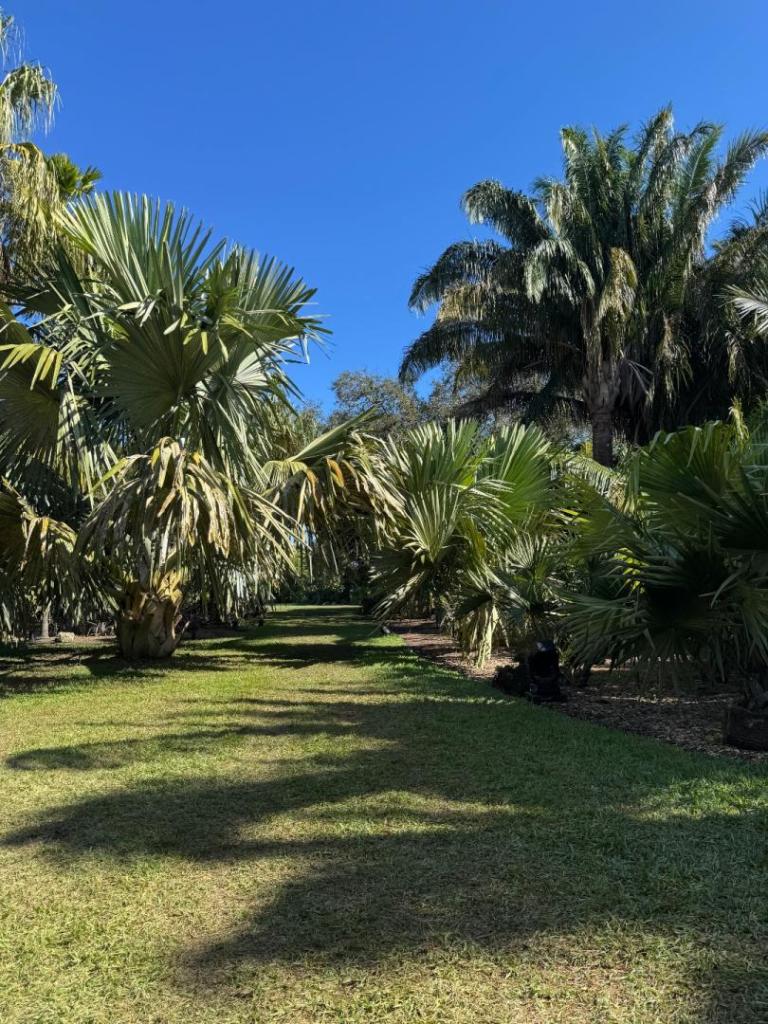





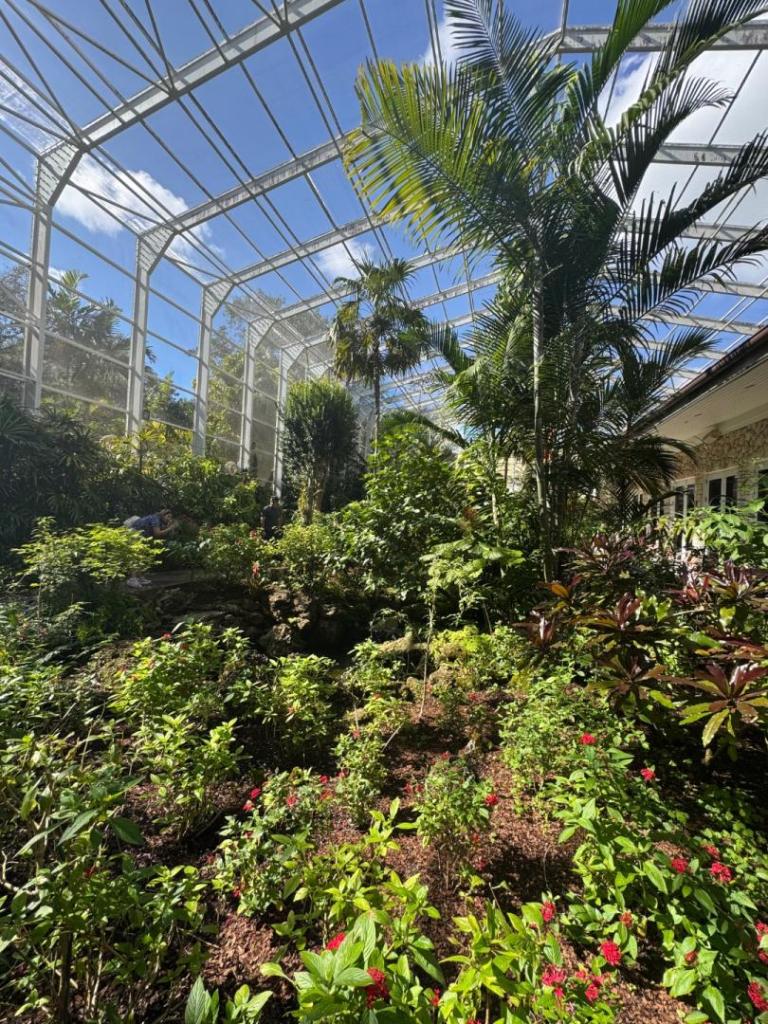
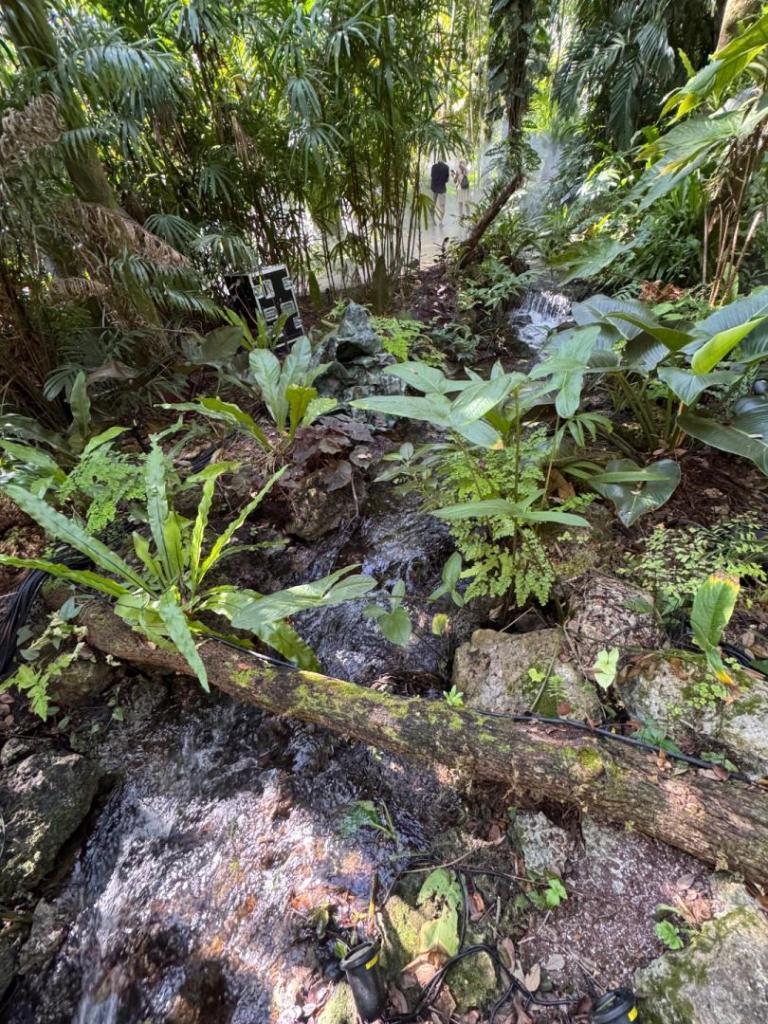








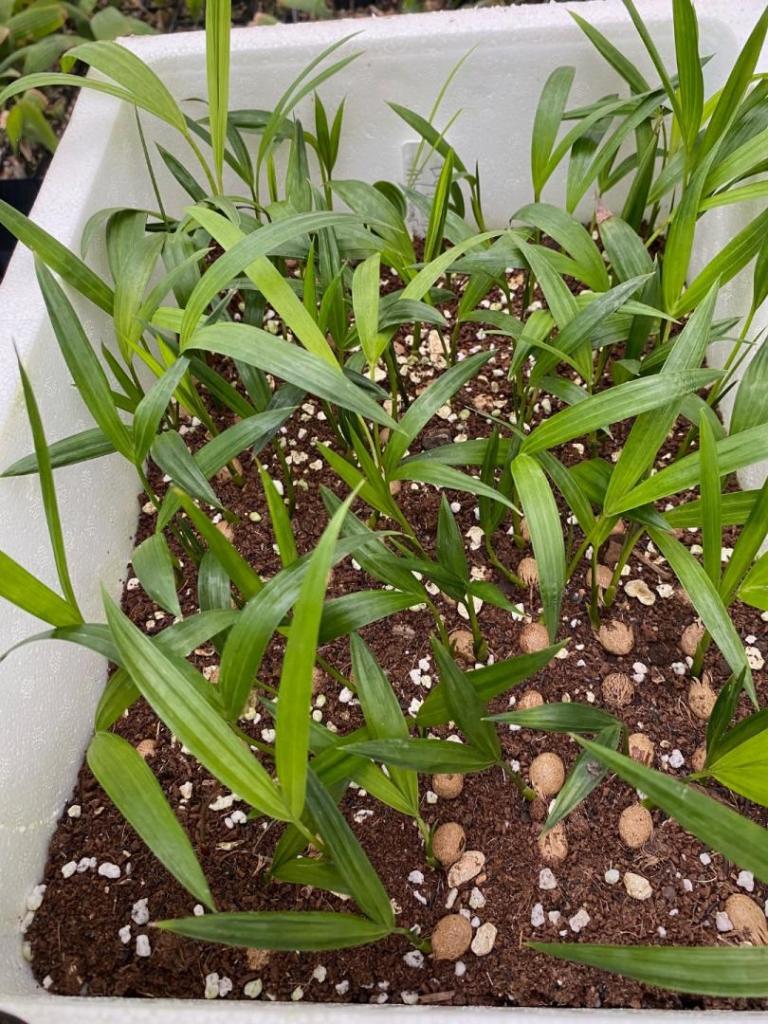


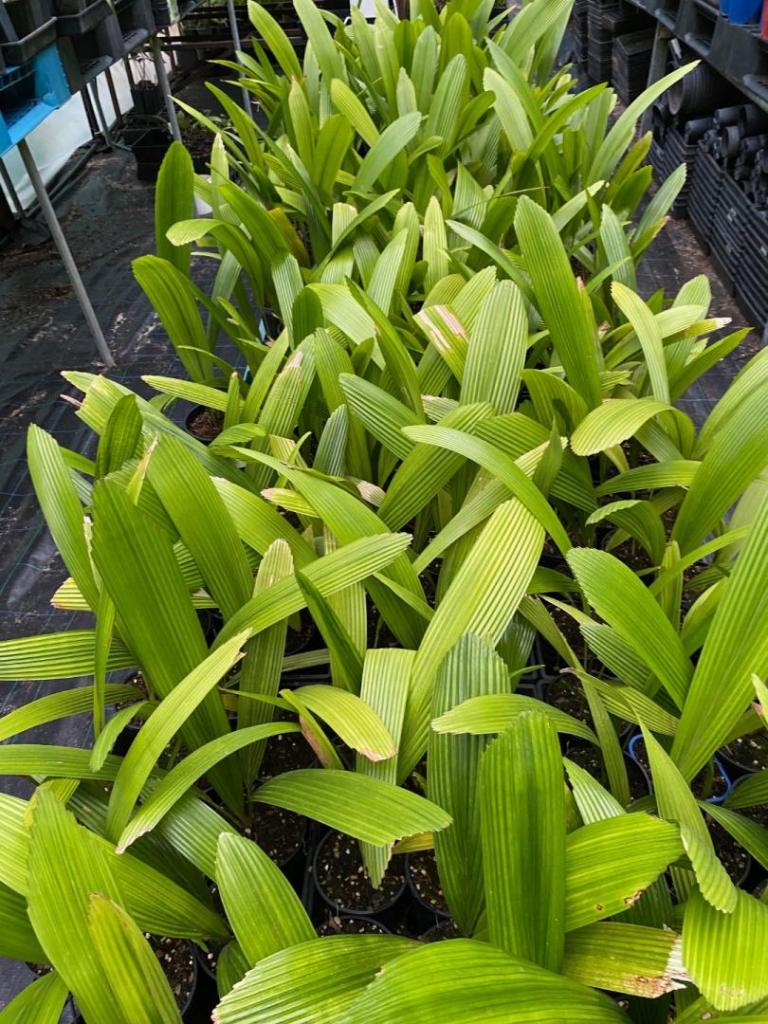



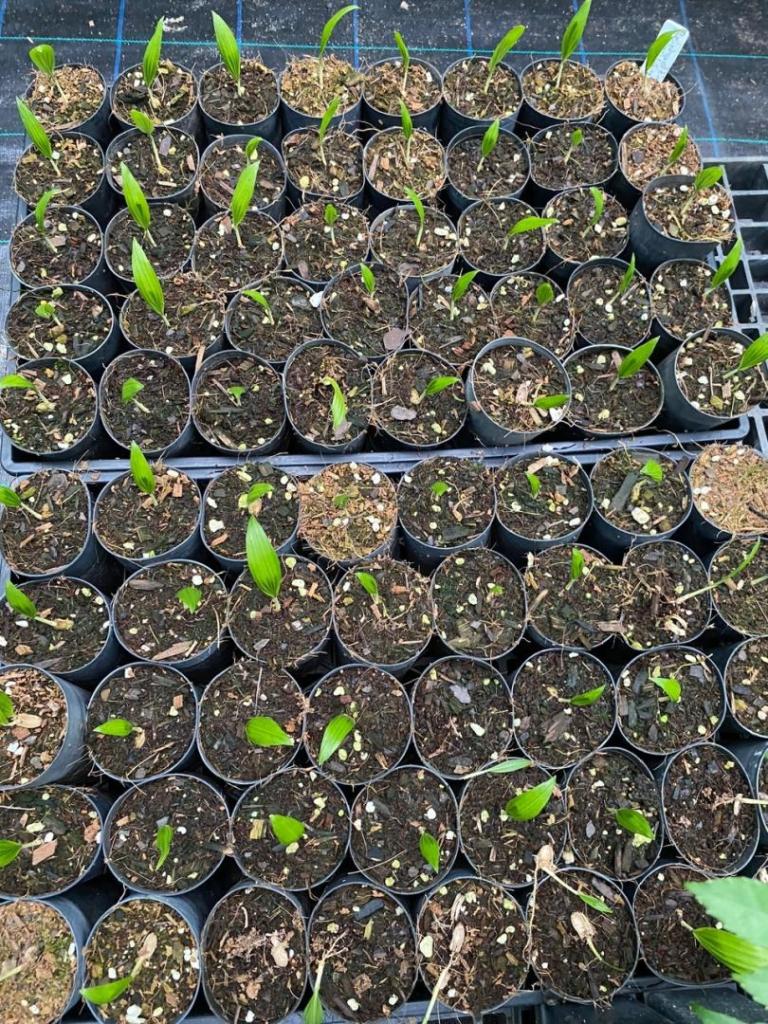


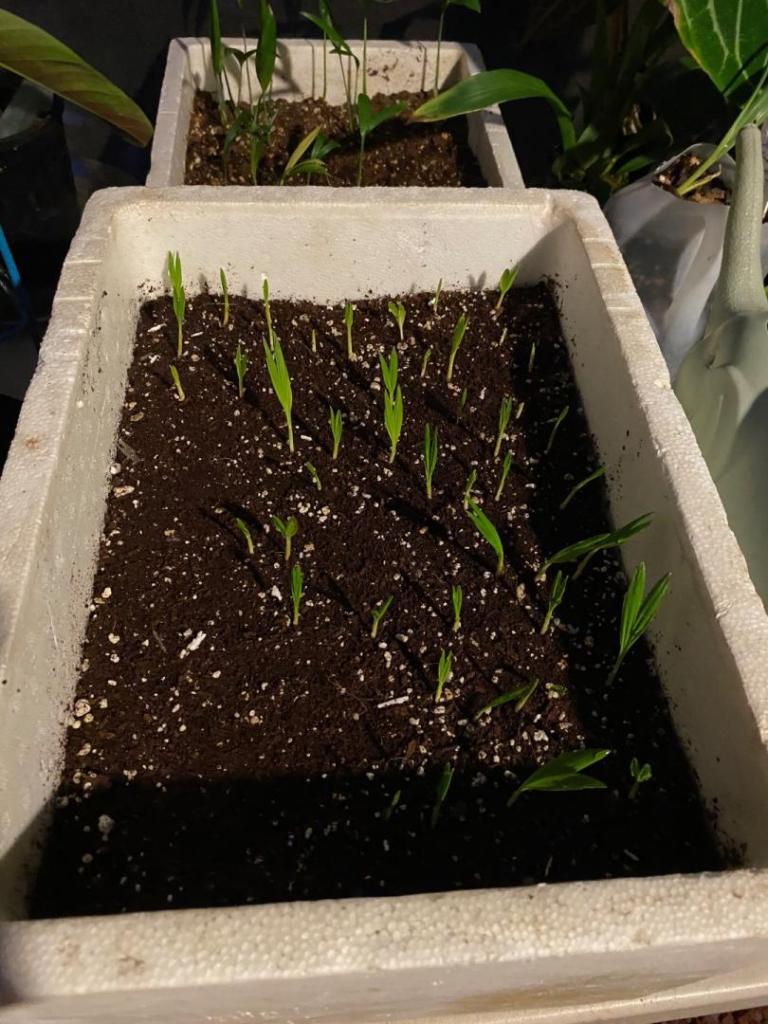


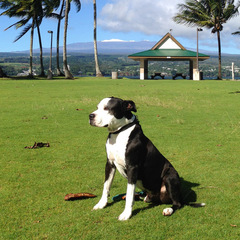





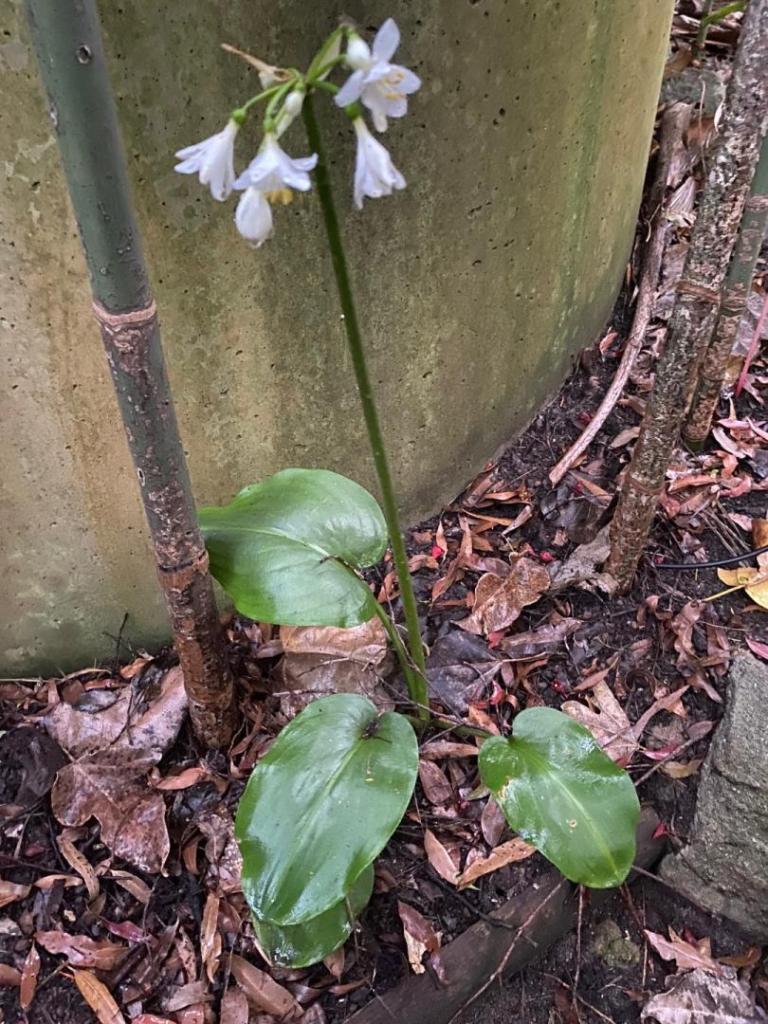
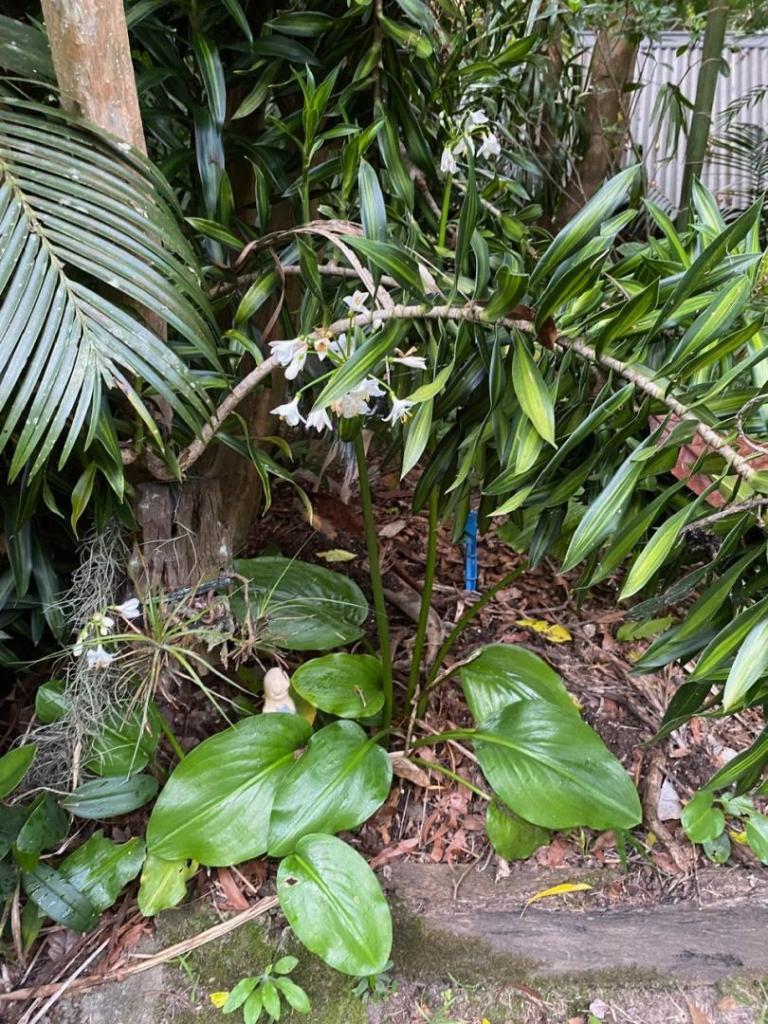

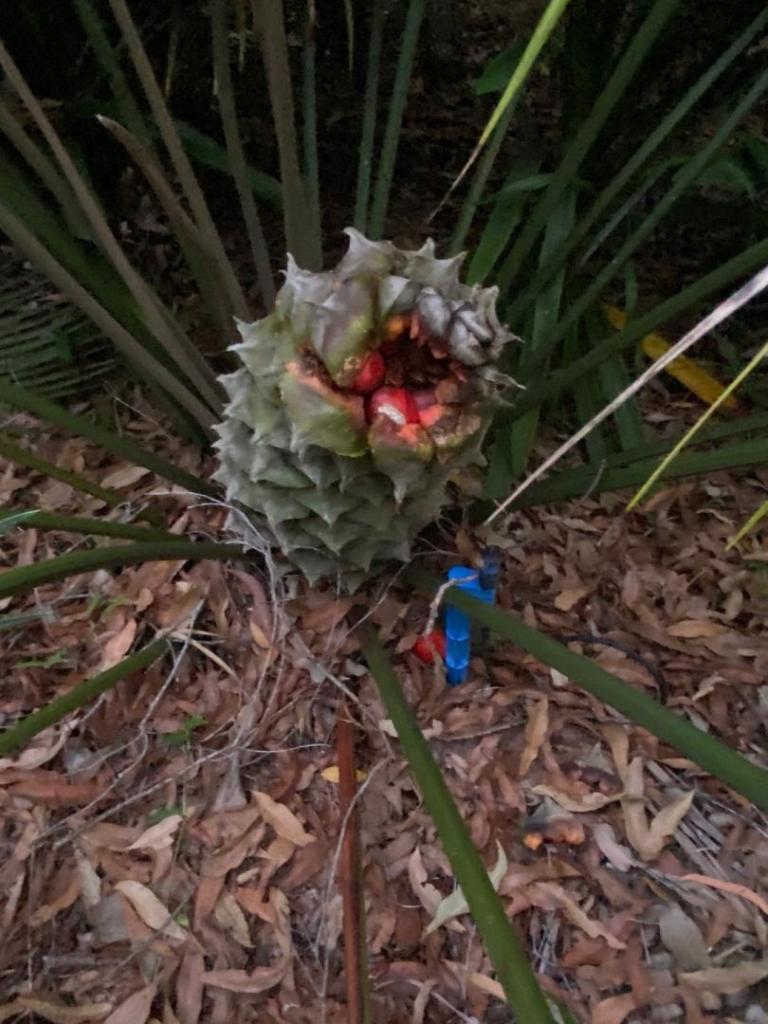

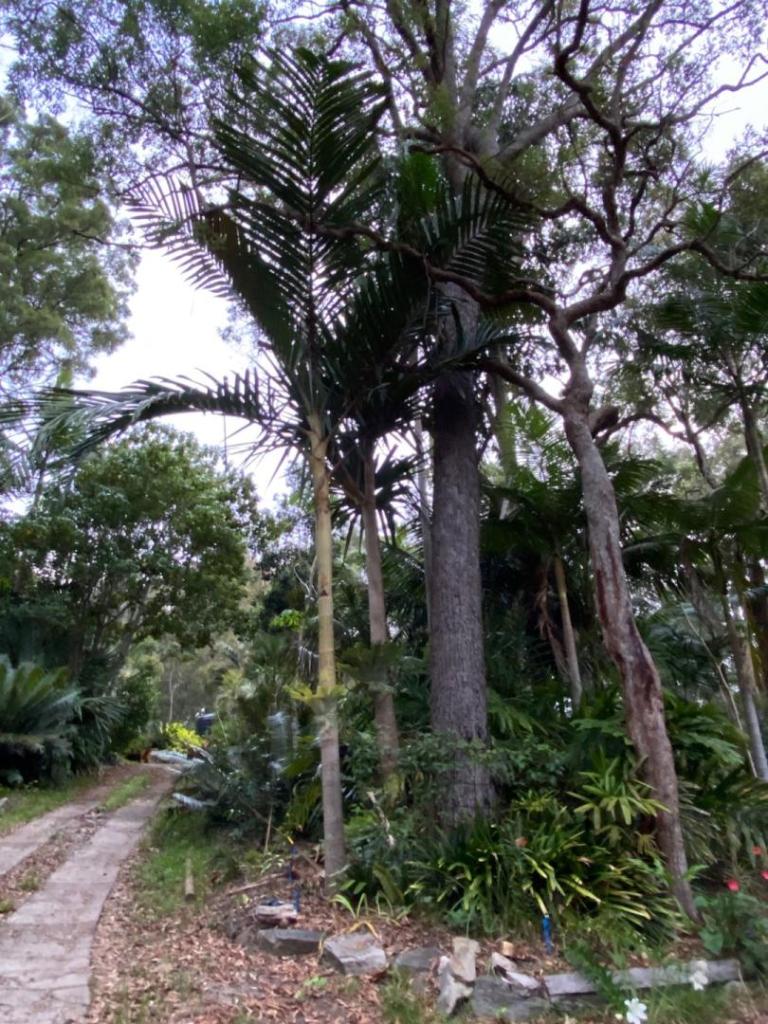


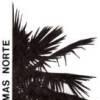
.thumb.jpg.b09c672f4bfc172294d94e38f2b6015d.jpg)


